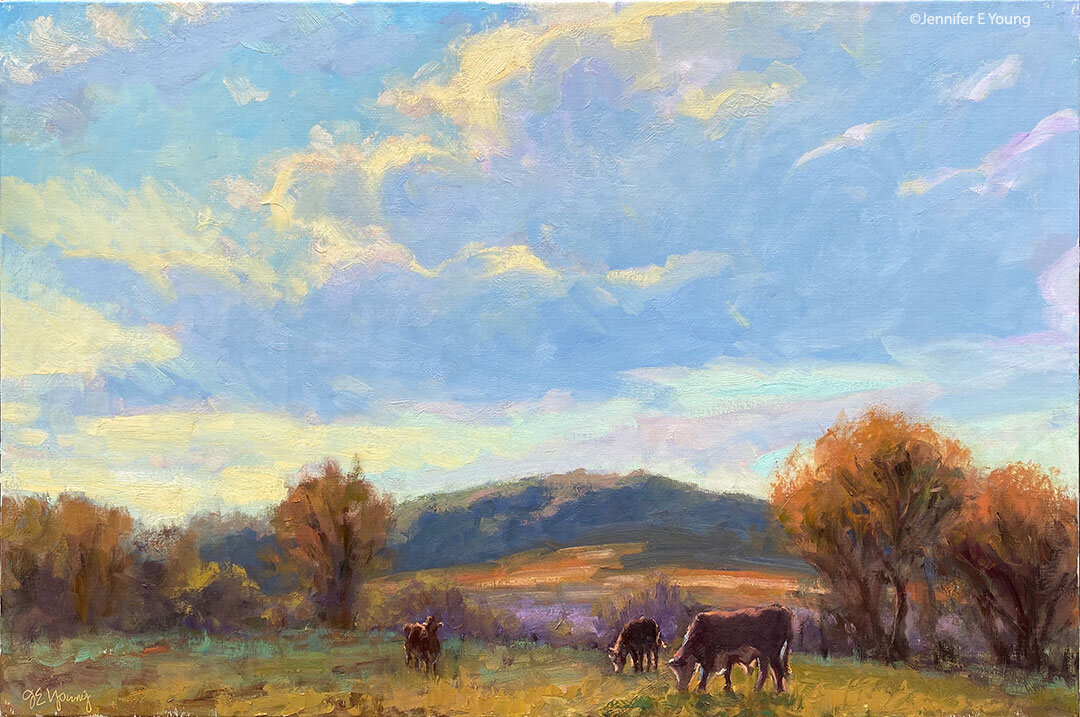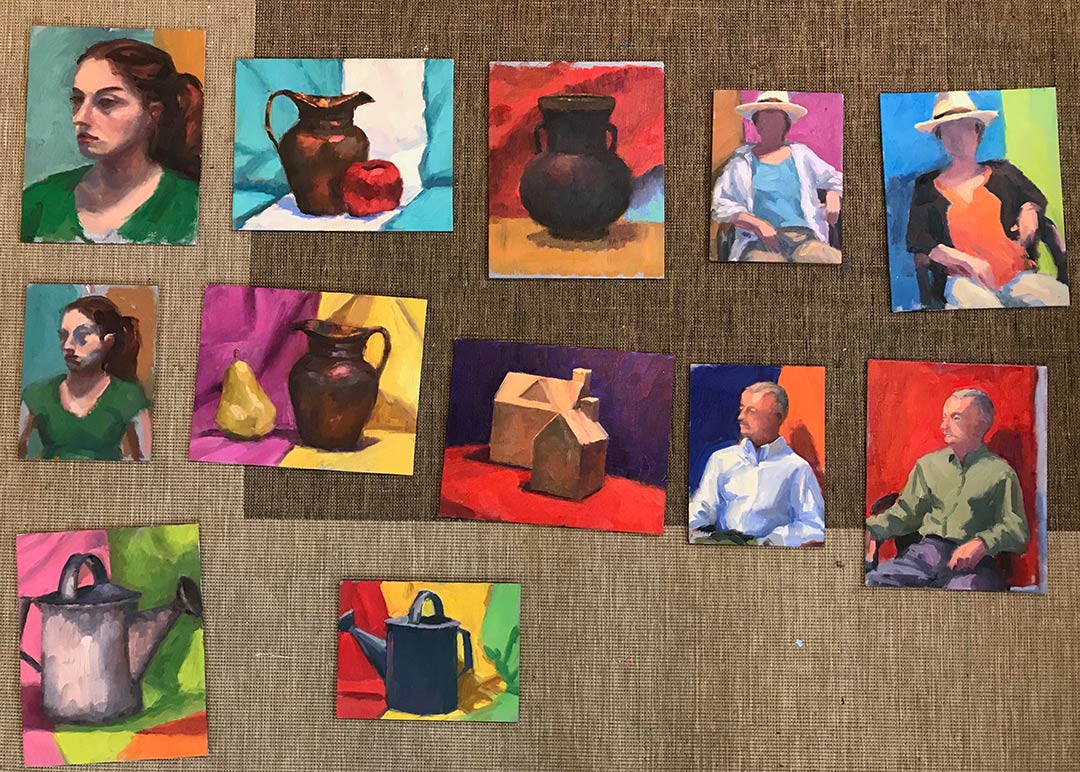The online charity art auctions I'm holding for the Central VA Foodbank have thus far been both satisfying and challenging for me. Satisfying because I am connecting with some wonderful people who have been willing to bid on and purchase my paintings for a good cause, and challenging because of the learning curve I've experienced with holding these auctions in the online environment.
Several people have asked me about the ArtByUsauction environment I have been using. ArtByUs is relatively new compared to eBay, and it only auctions artwork and handmade items offered by artists, galleries and dealers. I started out with ArtByUs for several reasons.
 First, it is currently free for artists to list there. While I believe their intent is to eventually charge for this service, this makes a huge difference to me, especially considering that I am allocating all of the proceeds of the winning bid to charity. I will note here that eBay will refund your listing and final value fees through their GivingWorks program, according to the amount you donate to a charity, but only if the item sells. And in order for eBay to list your auction as a charity, they require you to work through an organization called MissionFish. The charity is also required to be registered with Missionfish, so if your desired charity is not on their list (as mine, initially,  was not) it is up to the fundraiser to ask the charity to go through the registration process. While eBay does refund some or all of the listing and final value fees, Missionfish takes as much as 20% of the final value of the donationfor it's intermediary services. On the other hand, going through Missionfish.org may offer some people peace of mind, as I have read reports of past fraudulent charity listings that took place on eBay outside of their Givingworks program.
There are pros and cons to using both ArtByUs and eBay for the charity auctions. While ArtByUs is free, it does not get the traffic that eBay does--not by a long-shot. So, at least in my case, I am the one who has been driving traffic to my auctions. It's been reported to me by at least one bidder that the registration process is also a little slow and can be a bit confusing, and the interface is a bit clunky. ArtByUs doesn't have as many bells and whistles as eBay, and, since eBay is owned by the same company that owns PayPal, Paypal is fully integrated into the eBay site. With ArtByUs, everything is pretty much a manual operation for me in regards to collecting the winning bid via Paypal and donating to the charity, so it has been more of a time consuming process than I anticipated.
Having said that, the support staff with ArtByUs is responsive to any questions or issues. They currently offer free basic listings, and unlike eBay which seems to attract a lot of bargain hunters in search of any number of products, ArtByUs lists only artwork. And while eBay does get a whole lot more traffic, my feeling is that this does not necessarily mean that my listing will be discovered. I do not have much experience with eBay thus far, but from what I have heard, competition is fierce and a lot of people experience the needle in the haystack syndrome unless they spend a lot more money with additional listing features. So it is likely if and when I list over there, any bidding would be as a result of my own contacts there as well.
For these reasons I've started out with ArtByUs. It's likely that at some point I will list over at eBay, and if I do, it will be interesting to see how the experience will compare to ArtByUs, and if the auction bids on eBay will be substantial enough to offset the other associated fees. Â
There were a few other things I discovered only after I started the project that I had not really thought through when I first conceived of it. I'll share a bit more about that in my next post. Meanwhile, if you've had bidding or auction experience with Ebay or ArtByUs, I'd welcome you to leave your comments.














